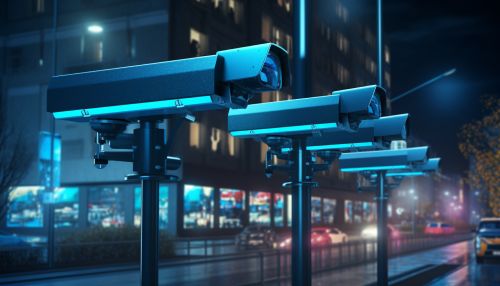Artificial intelligence in video surveillance
Introduction
Artificial intelligence (AI) has made significant strides in various sectors, and video surveillance is no exception. The integration of AI in video surveillance systems has revolutionized the way security is managed and enforced. This article delves into the application of AI in video surveillance, discussing its advantages, challenges, and future prospects.


Evolution of Video Surveillance
Video surveillance has evolved significantly over the years. The initial phase of video surveillance was characterized by analog Closed-Circuit Television (CCTV) systems. These systems were primarily used for live monitoring, with limited recording capabilities. The advent of digital technology led to the development of Digital Video Recorders (DVRs) and Network Video Recorders (NVRs), which improved the recording capabilities of surveillance systems.
The integration of IoT technology with video surveillance led to the development of smart surveillance systems. These systems are characterized by their ability to connect to the internet, enabling remote access and control. The most recent development in video surveillance is the integration of AI, which has significantly enhanced the capabilities of surveillance systems.
Artificial Intelligence in Video Surveillance
AI in video surveillance refers to the use of machine learning algorithms to analyze video feeds and detect anomalies. The AI algorithms are trained to recognize patterns and behaviors, enabling them to identify suspicious activities or individuals. The integration of AI in video surveillance has led to the development of intelligent surveillance systems that can perform tasks such as object detection, facial recognition, and behavior analysis.
Object Detection
Object detection is one of the primary applications of AI in video surveillance. AI algorithms are used to detect and track objects in a video feed. These algorithms can be trained to recognize specific objects, such as vehicles or individuals. This capability is particularly useful in traffic surveillance, where AI can be used to detect and track vehicles, monitor traffic flow, and detect traffic violations.
Facial Recognition
Facial recognition is another significant application of AI in video surveillance. AI algorithms are used to analyze facial features and compare them with a database of known individuals. This capability is particularly useful in security surveillance, where AI can be used to identify individuals of interest or detect unauthorized access.
Behavior Analysis
Behavior analysis refers to the use of AI to analyze and interpret human behavior. AI algorithms are trained to recognize patterns and anomalies in human behavior, enabling them to detect suspicious activities. This capability is particularly useful in security surveillance, where AI can be used to detect activities such as loitering, trespassing, or theft.
Advantages of AI in Video Surveillance
The integration of AI in video surveillance offers several advantages. Firstly, AI enhances the efficiency of surveillance systems. Traditional surveillance systems require human intervention for monitoring and analysis. However, AI-enabled surveillance systems can analyze video feeds in real-time, reducing the need for human intervention.
Secondly, AI improves the accuracy of surveillance systems. Traditional surveillance systems are prone to false alarms due to their inability to distinguish between normal and suspicious activities. However, AI-enabled surveillance systems are trained to recognize patterns and anomalies, reducing the likelihood of false alarms.
Thirdly, AI enhances the capabilities of surveillance systems. Traditional surveillance systems are limited to recording and monitoring. However, AI-enabled surveillance systems can perform tasks such as object detection, facial recognition, and behavior analysis.
Challenges of AI in Video Surveillance
Despite its advantages, the integration of AI in video surveillance also presents several challenges. Firstly, AI algorithms require large amounts of data for training. This requirement poses a challenge in terms of data collection and storage.
Secondly, AI algorithms are prone to bias. This bias can result from the data used for training the algorithms. If the training data is not representative of the population, the algorithms may produce biased results.
Thirdly, the integration of AI in video surveillance raises privacy concerns. The use of AI for facial recognition and behavior analysis can infringe on individuals' privacy rights. Therefore, it is essential to balance the benefits of AI in video surveillance with the need to protect individuals' privacy.
Future Prospects of AI in Video Surveillance
The future of AI in video surveillance looks promising. With advancements in machine learning and computer vision, the capabilities of AI-enabled surveillance systems are expected to improve. Future developments may include the integration of AI with other technologies, such as drones and robotics, to enhance surveillance capabilities.
Furthermore, advancements in AI algorithms may improve the accuracy and efficiency of surveillance systems. For instance, the development of deep learning algorithms may enhance the capabilities of AI in object detection, facial recognition, and behavior analysis.
However, the future of AI in video surveillance also depends on addressing the challenges associated with its integration. This includes addressing issues related to data collection and storage, algorithmic bias, and privacy concerns.
